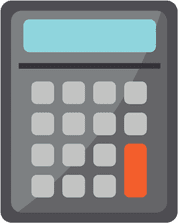Most people, even savvy real estate investors, underestimate the amount of money an IRA can save over time. Initially small accounts can grow into very large accounts, especially in combination with leverage.
To illustrate this point, here’s a not-so-crazy scenario that I got from tax attorney/CPA John Hyre (that way if the numbers are wrong I have someone else to blame -;)
How to Grow Your IRA from $5,500 to $204,345 with a Single Rental Property
You’re 40 years old and contribute $5,500 to your Roth IRA. I’m going to show you how you can pull $204,345 out of that single contribution over your lifetime with a SINGLE rental property.
The Roth purchases a rental for $27,000 (including renovation and closing costs), and you borrow 100% from an investor (paying 6.75% interest over 8 years). We’re leaving our initial $5,500 in the account for reserve.
The rental produces $675 per month in rental income, and expenses are 40% or $270, so the net rental income is $4,860 per year.
Your IRA can’t keep all of that because you have loan payments of $4,377 and you have to pay a special tax called the “UBIT” in the amount of $306. So at the end of year one, your IRA only really gets to keep $177 (not a lot, but remember you still have $5K in reserves if you need it!).
At the end of 8 years, you are 48 years old and the Roth IRA owns one free and clear property plus it has $5,225. There are no more loan payments or UBIT tax, and the property now produces $4,860 in net cash flow per year (assuming you never raised the rent).
Let’s assume the IRA cash flows that way for the next 12 years (until you turn 60). That means after 12 years, you have $63,545 in the account.
Now that you’re 60, you can pull money out of the Roth IRA totally tax-free.
Let’s assume you live for another 30 years. That means you’re pulling another $145,800 of income out of that single property, for a total of $204,345 – all from a single $5,500 contribution to a Roth IRA and one rental property.
And that doesn’t even include appreciation and rent increases. Or the fact that you never contributed any more to your IRA.
Now imagine if you did that a few more times!
Using IRAs to Raise Money
IRAs are also a great way to raise money for your real estate projects from others. There is a
TON of money in people’s IRAs, and it’s hardly making any kind of return.
Most people don’t know that you can legally invest your IRA in someone else’s flip or multifamily project. And instead of making a measly 4% return, people can make much higher rates of return – all by investing with their IRAs.
This is called “self-directed” IRA investing. And it’s a huge untapped source of capital for your real estate deals.
There are Other Cool IRA Plans That Let You Build Even More Wealth
Have you ever heard of a CESA plan? I hadn’t until recently.
CESA is short for “Coverdale Educational Savings Accounts” that let you make tax deductible contributions each year and use that money to pay for education-related expenses.
And when I mean education-related, I mean anything related to K-12 and college education, including the computer and office supplies – for the entire family.
Then there are the Health Savings Accounts (HSA’s) that are similar and let you pay for health-related expenses tax-free. And you can even invest with them like you can with an IRA.
Totally cool.
But Here’s The Catch …
While IRAs are an extremely powerful way to build incredible wealth over time, you have to play by the rules.
There’s something called “prohibited transactions” (or “PT’s” for short) that disallow you from using your IRA in certain ways. Whenever you invest your IRA, it has to be an “arms-length” transaction, i.e. one in which you don’t directly or indirectly benefit (only the IRA can benefit).
The challenge is that the IRS regulations define PT’s quite broadly. For example, can you lend money to the contractor who is renovating your house? Most likely not.
That’s because you lending him (or not lending him) money could indirectly benefit you in terms of his enthusiasm to finish the renovation project.
The problem is that if you have a single prohibited transaction in your IRA, even if it’s a tiny loan you made to a relative (also a PT), you can destroy your entire IRA account that you’ve diligently built up over a lifetime.
It’s therefore critical that you have a thorough understanding of the prohibited transaction rules.
To help me with this, I acquired John Hyre’s course call “The Tax Litigators Guide to Tax- Free IRA, HSA & CESA Wealth”, which teaches all aspects of using various IRA plans to legally build wealth by deferring or eliminating taxes. It focuses heavily on prohibited transactions. If you’d like to read my review of the course, please go here:
He also has a few live events coming up (see here). If you can see John live, you should do it. He’s absolutely hysterical but he also knows what he’s talking about. And after going through his course, I was shocked about how much I didn’t know about IRAs (and I’ve used self-directed IRAs!).
It was well worth the investment, and I highly recommend you take a strong look at it yourself.
To Your Success…
Michael
